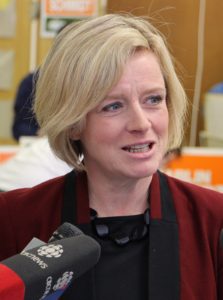Updated 27 March 2023
A Better Future: Fiscal Recommendations to Position Alberta for Success, authored by Todd Hirsch for NDP leader Rachel Notley was released Friday 23 March. Hirsch, ATB’s Chief Economist (2007-2022) is deeply knowledgeable about Alberta’s economy and the financial system having worked earlier in his career at the Bank of Canada (full disclosure: I hired Todd while I was at ATB Financial). In short, he is a respected economist and a consummate communicator,
A Better Future is a valuable contribution to a long overview discussion of Alberta’s public finances.
In the Introduction, Rachel Notley observes the following.
- Albertans want and deserve excellent healthcare and a top-flight education
- The Government of Alberta relies on natural resources revenue.
- Natural resource revenue is unreliable and cannot be used to pay for the basics,
- Getting the best return on investment from government spending,
- Need real progress in diversifying economy,
- Repairing damage to public healthcare and education, and
- We need a plan (emphasis added).

Rachel Notley Source: Wikipedia.org
There are several surprises here in the introduction. Firstly, her choice of words around the need for a “return on investment” from public expenditures. This picks up a theme in Hirsch’s report (analyzed below) that has never really been on the NDP’s radar screen. This should somewhat ameliorate the business community’s mistrust of a tax and spend government.
A second nuance is the comment about “real” progress on diversifying the economy. The NDP did commission a report on diversification in 2016 with the mandate to look at “energy diversification” and relied too heavily on government subsidizing mega projects. Its first recommendation read:
that the province commit to expanding the downstream oil and gas sector as a key part of its economic policy. The Government of Alberta should formally adopt a vision of transforming Alberta into the premier jurisdiction for downstream oil and gas investment in North America.
This claim seems quaint after nearly nine years with wildfires and glaciers melting and oil sands tailings ponds leaking in the years intervening. The emphasis on real diversification will hopefully signal a change away from more government subsidies to fossil fuel and petrochemical megaprojects where energy diversification is an oxymoron.
Perhaps more The Last of Us TV series will be in Alberta’s future.
Another surprise is the omission of any reference in Notley’s covering memo to “climate change.” This is perhaps out of scope for Hirsch given the mandate to sort out the windfall policy options.
Finally Notley’s introduction for the first time acknowledges Alberta’s fiscal dilemma. This is highly notable the juxtaposition between Albertans wanting and deserving excellent public services and the realization that so much of the financing of ordinary spending is from an extremely volatile revenue base.
Lastly, consistent with the NDP’s core policies, is the emphasis on public education and health care. The party sees these services as fundamental to their mandate. Given charter schools and promised charter hospitals, an NDP government will clearly move to stop this trend.
It may well be that some of the ideas of leaders Smith and Notley are not that far off one another. They both do not want a sales tax, despite Ms. Smith’s 2021 chapter in a School of Public Policy publication. Both leaders seemed to be coming to the realization that running a $65-billion organization while relying too heavily on one type of revenue source whose revenues are based on commodity prices and exchange rates which are totally outside the provincial governments control. This common understanding is a very good thing. Still understanding and doing something about it rather than talking about doing something about it- is the key.
Resource revenue dependence has been an admission staple of provincial budgets for many years but little has been accomplished to do anything about it. As in may things education is the key.
Hirsch’s analysis
In 14 short pages, Mr., Hirsch summarizes the fiscal issues confronting the province, not simply as a resource windfall, but how the periodic windfalls disrupt the provision of public services.
Critical to the analysis is Hirsch’s clarity on the nature of resource revenue. The Government of Alberta books all of its resource revenue and currently takes 100 per cent of resource revenues into General Revenue Fund. Hirsch argues, as have others, that resource revenue is qualitatively different from ordinary tax revenues, which are easily repeatable. He notes this revenue is “not revenue at all, it is the sale of an asset that is being converted from one form (i.e., hydrocarbon molecules in the ground) into another (i.e., money).” This is akin to selling off a quarter section of the farm as Ed Stelmach used to say. The income producing piece of land is someone else’s and you are left with some cash to invest, pay off debt or spend on groceries or a new car.
It is a great strength of Mr. Hirsch to make these concepts simple and understandable.
This distinction is a major challenge for our political leaders to get their head around. How do they explain this accounting distinction in an understandable way to move their constituents away from their tendency to expect that surplus dollars will be spend- not saved or used to pay down debt.
The Interviews
Hirsch interviewed 37 individuals listed at the back of his report. He mentions specific advice from key former Alberta government officials as well as the former Governor of Canada’s central bank, David Dodge. His interviewees have diverse views which is unlike past UCP commissions. Hirsch talked to many union leaders and Parkland’s Executive Director and also to key business leaders. These leaders included the President of the Calgary Chamber of Commerce, the Canadian Federation of Independent Business, the chief economists of the Business Council of Alberta and Alberta Central as well as economists from the conservative C.D. Howe think tank.
union leaders and Parkland’s Executive Director and also to key business leaders. These leaders included the President of the Calgary Chamber of Commerce, the Canadian Federation of Independent Business, the chief economists of the Business Council of Alberta and Alberta Central as well as economists from the conservative C.D. Howe think tank.
David Dodge, Source: Bank of Canada
Recommendations
Hirsch’s recommendations fall into two parts. First, he makes recommendations concerning the the management of volatile resource revenue. Secondly, he makes specific recommendations around budgeting.
Managing Volatile Resource Revenue
Hirsch recommends the following:
- Assign a fixed amount of resource revenue, adjusted annually for inflation that will be apportioned to base budgeting purposes.
- Consult with Albertans to consciously determine a goal and purpose for the Heritage Fund.
- In the absence of any plan, debt repayment should be the default option for surpluses.
- Government should set a fiscal anchor of net debt/GDP of 30 per cent.
Several observations come to mind. The first recommendation was adopted by the Klein government after recommendations of the Financial Management Commission in 2002 headed by oil executive and ex Department of Energy bureaucrat David Tuer. Unfortunately, as Ron Kneebone and Margarita WIlkins have chronicled in their paper “50 years of Alberta budgeting,” measures to limit the utilization of resource revenue were unsuccessful;. Hirsch recognizes this as a lack of permanence and believes the indexing factor might help in the words of a former Deputy Minister of the Executive Council “institutionalize” it.
Indexing the base amount, which will be controversial in the first place, will do little to satisfy expectant MLAs and cabinet ministers when a gusher of cash arrives unexpectedly especially before a general election. The best antidote for this fiscal malady is a well educated public which understands the intellectual merits of the case for not using “bonus revenue” for ordinary or base budget spending.
The second recommendation to forge a consensus about the Heritage Fund’s “goal and purpose” is a welcome and overdue recommendation and one where considerable public input might be expected. As Hirsch notes, many Albertans look enviously to Norway’s gigantic pension fund. The author points out though that Norway has a 25 per cent value-added tax. So any recommendations must be considered in light of politicians’ general view that the public thinks taxes are bad and the government “wastes” milllions, if not billions of dollars.
One of the criticisms made throughout the report is that Alberta governments have been operating without a sustainable fiscal plan for some time. This criticism is valid in general terms but belies the consistent hard work of departmental staff who, year in and year out, write “fiscal plans”.
The debt versus savings option, recently canvassed by ProfessorTrevor Tombe for the Fraser Institute, explains that while interest on the public debt is at a lower interest rate than rates of return for AIMCo-managed funds, this historical fact is changing as interest rates rise. Hirsch’s default option is an interesting solution to this conundrum which presupposes a plan.

From a credit perspective, rating agencies like the fact that the Alberta government, which is subject to the vicissitudes of a boom and bust economy, has significant savings the government could draw on in an emergency.
As I commented many times in analyzing the revenue mix of the province, not only is corporate and resource revenue volatile, so is the investment income of the province. In the absence of a sales tax to bring much needed stability to provincial revenue, the default option to pay down debt is clearcut and straightforward. My only additional comment would be that consideration be given to purchasing Alberta debt on the open market when trading at at discount (below 100 cents on the dollar).
Mr. Hirsch’s fourth recommendation, to set a fiscal anchor of net debt at 30 per cent of GDP is consistent with the UCP government’s fiscal anchor. This seems a reasonable measure- measures which other Canadian governments have tacitly adopted. Like any law or government policy, the fiscal anchor could be moved up like Alberta’s debt limit in the 1980s.
In sum, these recommendations are thoughtfully considered and for the NDP would serve to burnish their finance credentials with skeptical members of the business community.
Budgeting
- Establish a strong, credible, and sustainable financial plan that will guide both revenue and expenditure.
- Alberta Treasury Board and Finance to maintain a model on the return on investment: a) debt repayment; b) savings; and capital investment.
- When total revenue and resource revenue exceed expenditures, apply a fixed formula for how surplus dollars should be allocated.
- A portion of surplus dollars should go to permanent endowments, like the Alberta Heritage Fund for Medical Research.
The final proposals, which go to the mechanics of budgeting, are the most difficult to achieve as proverbial the rubber hits the road. The difficulties begin with determining what proportion of resource revenue will not be spent on departmental budgets. A fiscal plan to be strong and credible must balance both political consideration for a bigger allocation with financial market concerns that Alberta will drift back into its historical patterns of spending all resource revenue. This requires a great deal of work in public education by both the premier and her finance minister. Public education in the form of fiscal history lessons might be a bit fun for Alberta public school children who would become familiar with the rags to riches to rags story of this Boom and Bust province.
It is vital that public education about lessons of Alberta’s calamitous fiscal history start with those running for political office at levels of government.
The second budgeting recommendation predictably comes from the business community. Adoption would would usher Alberta again into a leadership role in understanding and hopefully holding ministers to account for the effective use of public funds. One of the sad laments of current politics is the spectacle of multiple news releases announcing or re-announcing programs with dollars attached and the imprimatur of both the ministers and the group spokespersons for the beneficiaries.
Alberta is not alone in this approach but was certainly one of the earliest adopters.. Transparency is known as one of the best disinfectants in encouraging ministerial accountability and efficient use of taxpayers’ dollars. A problem however is the bureaucratic cost of scoping out the information required, verifying it, auditing it and hopefully automating it. If a successor government manages this project well it should have valuable intellectual property to sell or give to other governments.
The idea of a fixed formula for parceling out the surplus is a difficult one. Hirsch includes proposals from the Calgary Chamber and the Business Council of Alberta along with his recommendation. The three proposals offer a buffet of options including a set amount to the Heritage Fund versus a percentage amount and specific percentages for” debt repayment; “long term strategic one-time investments;” affordability measures, strategic investments, and immediate and emerging priorities. Getting any cabinet to sign off to any formula will be time consuming and difficult and the debt default option will force ministers to compromise.
A key recommendation is that additional spending not be permanently built into the operating budget.
But should the “fixed” formula be embedded in legislation or subject to an annual vote in the Legislative Assembly.? Since the character of every windfall is unique, it seems wise that these decisions should be made in open debate in the Legislature. Again transparency is a useful disinfectant.
All in all, this short report is an estimable undertaking and worthy of a read by all Albertans, not only those deeply investing in public policy. Hirsch’s writing is accessible and not technical. There are simple charts and tables which would not tax most readers.
Although the timing of the release coincided with news of the departures Travis Toews and Sonya Savage from public life, I am hopeful the document forms part of NDP policy as is implied in Notley’s introduction.
Afterword- on economic diversification
Hirsch does discuss the big question about diversifying the economy. Hirsch has authored or co-authored a number of provocative books (The Boiling Frog Dilemma: Saving Canada from Economic Decline) .on the rapidly changing economy and labels himself as the Modern Economist.
In addressing diversification he notes that in his interviews on allocating surplus dollars many suggested directing surplus dollars to diversifying Alberta’s economy (p. 14). He argues that diversification alone is not sufficient, rather prosperity, stability and dynamism should animate policy development in Alberta.
Central to reaching these goals and helping to diversify the economy are the following priorities
Healthcare,
Quality of life and the “care economy”,
Education, training and skills development,
Environment, renewable energy and climate change mitigation,
Agriculture and food security, and
Technology and InnovationIn short, diversifying the economy is not an easy task, nor is it the end goal. But by focusing on these six priority areas, we will not only find our economy more diversified, but also more prosperous, stable and dynamic.
In this paper there is no mention of hydrogen technologies but there is mention of thermal power, wind power and solar power. There are two mentions of a net-zero carbon world but no mentions of capture capture technology. While Hirsch’s mandate was narrow, these references or non-references may give hints about where an NDP government would place its climate change mitigation priorities. There were no references to cleaning up orphan wells or tailings ponds in the paper.
Related Posts